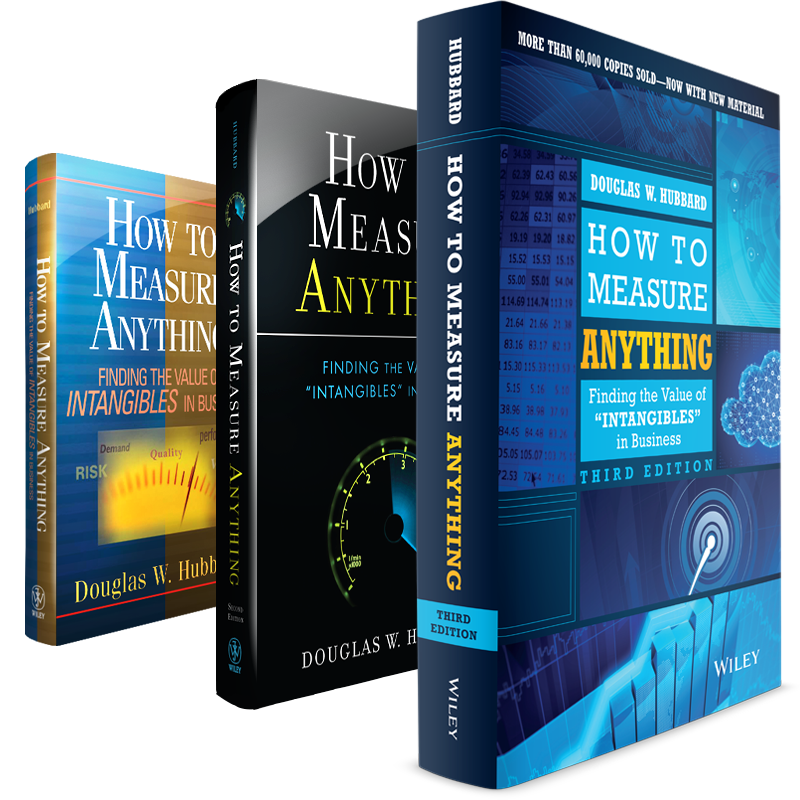
by Douglas Hubbard | Mar 15, 2024 | Case Studies, Client Focus
- Client: A Global Leader in Agricultural Sciences
- Industry: Crop Science
- Objective: To forecast and prioritize new corn varieties to maximize future product success.
Executive Summary
Our client, a trailblazer in agricultural sciences, sought to gain a predictive edge in the crop science arena by being able to accurately forecast which crop varieties from their diverse portfolio would yield the most success in the upcoming years. With the help of HDR’s robust Risk Return Analysis (RRA) model, they could optimize their selection process and set the stage for groundbreaking efficiency in crop production.

Challenge:
In the dynamic field of crop science, the challenge was multi-faceted: predicting agricultural product success in an environment fraught with uncertainties such as climate change, market demand, and regulatory shifts. Our client needed a measurement and a prioritization system that could sift through the complexities and forecast the performance of prospective products in their pipeline.

Solution:
The HDR team crafted a comprehensive RRA model that integrated historical data, current market trends, and expert insights. The model enabled a data-driven approach to evaluate the myriad of potential corn varieties and isolate those with the highest potential returns, ensuring that the client’s resources were allocated to products most likely to succeed.

Results:
Our predictive model served as a crystal ball for the client, providing highly accurate forecasts that the client was able to verify against actual market data. As a result, the client was empowered to make informed decisions that enhanced their portfolio performance substantially.

Conclusion:
By leveraging the RRA model developed by HDR, our client achieved a phenomenal leap in their ability to forecast and prioritize future corn varieties, marking a new era in agricultural productivity. This strategic advantage not only propelled their research and development efforts but also reinforced their position as a visionary leader in crop science.


by Douglas Hubbard | Mar 15, 2024 | Case Studies, Client Focus
- Client: An Established Midwestern Financial Institution
- Industry: Banking
- Objective: To develop the bank’s cybersecurity framework through in-depth workshops, empowering internal teams to manage and improve their cyber risk analysis using HDR’s models.
Executive Summary
With cyber-attacks becoming increasingly sophisticated, a prominent financial institution recognized the urgent need to elevate their cybersecurity posture. They partnered with HDR to enhance their internal capabilities in identifying, assessing, and managing cyber risks. HDR’s model provided a structured and consistent framework, while their coaching ensured the bank’s team fully grasped the complexities of cybersecurity risk analysis, enabling them to independently handle their defense strategies effectively.

Challenge:
Despite having an existing cybersecurity protocol, the financial institution’s approach to risk analysis was inadequate for the increasingly dynamic threats they faced. There was a significant need to refine their strategy to quantify and manage cyber risks more effectively. The challenge lay in adopting a method that was both comprehensive and could be seamlessly integrated into their day-to-day operations.

Solution:
HDR addressed this challenge head-on by providing expert-led cybersecurity workshops tailored to the institution’s context. An HDR-crafted template version of their advanced cybersecurity model was shared, along with strategic training sessions. This enabled the bank’s team to extensively train and eventually take full ownership of their cyber risk analysis. Furthermore, HDR furnished the team with additional tools like the Lens modeling method and various estimation techniques, thoroughly equipping them to maintain robust cybersecurity independently.

Results:
The intensive training and the practical adoption of HDR’s models yielded remarkable results. The financial institution’s internal security team could now effectively identify potential threats, assess their impact, and prioritize mitigation efforts profoundly. This strategic transformation empowered the institution to safeguard its assets, customer data, and reputation more robustly than ever before.

Conclusion:
The advanced workshops and model implementation orchestrated by HDR culminated in a comprehensive boon to the financial institution’s cybersecurity measures. The strengthened defenses, coupled with the ability to conduct in-depth internal risk analyses, established the bank as a paragon of digital safety within the industry, ready to take on the future’s challenges.


by Douglas Hubbard | Mar 15, 2024 | Case Studies, Client Focus
- Client: A Global Leader in the Insurance Marketplace
- Industry: Insurance
- Objective: To enhance cybersecurity risk management by developing a comprehensive risk and control model tailored for the insurance industry.
Executive Summary
In a world where cyber threats are rapidly evolving, a pioneering insurance company sought to fortify their cybersecurity risk posture. The organization recognized the need for a robust cybersecurity risk model that would cater to their unique industry requirements. In collaboration with HDR, they embarked on a journey to dissect and categorize their cybersecurity risks into high-level macro risks and specific threats to business-critical applications, culminating in the creation of an innovative likelihood model and a NIST-based control model.

Challenge:
The insurance company grappled with categorizing and assessing cybersecurity risks in an industry plagued by sophisticated threats. The task at hand was to identify and stratify the potential risks associated with high-level macro variables and business-critical systems, and determine the probable impact on the organization, such as the number of records that could be compromised in a breach. Additionally, there was a pressing need to establish a baseline for cybersecurity measures that aligned with recognized standards.

Solution:
Addressing the complex challenge, HDR adopted a holistic approach that mapped out the insurance company’s cyber threat landscape. A detailed risk model was constructed, outlining macro risks, vulnerable business-critical applications, and establishing a likelihood of incidents. Every application was examined to estimate the potential loss of records in the event of a cyber incident. Furthermore, a foundational control model was created, drawing from NIST guidelines, to enhance the client’s cybersecurity protocols and safeguard against imminent cyber threats.

Results:
The engagement with HDR delivered a tailored cybersecurity analysis that empowered the insurance company with a nuanced understanding of their risks and provided robust mechanisms for risk management. The risk and control models developed not only met but exceeded industry standards, positioning the client to proactively tackle cybersecurity threats and protect their vast repository of sensitive information.

Conclusion:
The strategic partnership with HDR was instrumental in equipping the insurance provider with advanced tools for identifying and mitigating cybersecurity risks. The project outcomes have substantially uplifted the client’s resilience against cyberattacks, showcasing a significant leap forward in securing the company’s digital assets and maintaining their industry-leading position.


by Douglas Hubbard | Mar 15, 2024 | Case Studies, Client Focus
- Client: A Leading Silicon Valley-Based Financial Institution
- Industry: Banking
- Objective: To conduct a cost-benefit analysis for consolidating data center operations, which involves advanced Monte Carlo models and data-driven dashboards
Executive Summary
A top-tier financial institution in the competitive Silicon Valley landscape faced the challenge of updating its IT infrastructure for improved performance and cost efficiency. The project involved a detailed cost-benefit analysis of data center consolidation that leveraged Monte Carlo simulations to generate innovative data-driven dashboards.

Challenge:
Amidst an evolving digital banking landscape, the client struggled with inefficient data center operations that led to unnecessary costs and operational delays. The lack of a robust framework for financial analysis hindered their ability to forecast and quantify the benefits of IT infrastructure upgrades.

Solution:
To tackle this, a top consultancy firm crafted a detailed plan that encompassed modernizing the client’s data analysis techniques through Monte Carlo simulations and sophisticated dashboards. This enabled a holistic view of prospective costs, benefits, and risks associated with data center consolidation.

Results:
The elegant solution provided transparency and data-driven insights into the decision-making process. Post-implementation, the firm recorded a substantial improvement in operational efficiency and a marked reduction in costs, propelled by better capacity planning and resource utilization.

Conclusion:
With the new analytics framework in place, the financial institution can now make strategic decisions regarding IT investments and data center operations with greater confidence and accuracy, securing a competitive advantage in the technological forefront of the banking industry.

by Douglas Hubbard | Aug 3, 2017 | Announcements, Articles, Events, News, Uncategorized, What's New
 On August 3, 2007, the first edition of How to Measure Anything was published. Since then, Doug Hubbard has written two more editions, three more books, in eight languages for a total of over 100,000 books sold. How to Measure Anything is required reading in several university courses and is now required reading for the Society of Actuaries Exam prep.
On August 3, 2007, the first edition of How to Measure Anything was published. Since then, Doug Hubbard has written two more editions, three more books, in eight languages for a total of over 100,000 books sold. How to Measure Anything is required reading in several university courses and is now required reading for the Society of Actuaries Exam prep.
Over the years, Hubbard Decision Research has completed over 100 major measurement projects for clients in several industries and professions. Clients included The United Nations, the Department of Defense, NASA, a dozen Fortune 500 companies, and several Silicon Valley startups.
Just since the first book, Hubbard Decision Research has trained over 1000 people in the Applied Information Economics methods. HDR has also been given several new measurement challenges including the following:
- drought resilience in the Horn of Africa
- the risk of a mine flooding in Canada
- the value of roads and schools in Haiti
- the risk and return of developing drugs, medical devices and artificial organs,
- the value and risks of new businesses
- the value of restoring the Kubuqi Desert in Inner Mongolia
- the value and risks of upgrading a major electrical grid
- new cybersecurity risks
- ….just to name a few
We have a lot going on in this anniversary year. Here are some ways you can participate.
- Have you been using methods from How to Measure Anything to solve some critical measurement problem? Let us know your story. We will be giving the top 3 entries up to $1,000 worth of How to Measure Anything webinars including your choice of any of the “Intro” webinars, Calibration training, and AIE Analyst training or time on the phone with Doug Hubbard. Send your entry to HTMA@hubbardresearch.com by Friday, August 11.
- We are continuing our research for a future topic “How to Measure Anything in Project Management” If you are in the field of project management, you can help with the research by filling out our project management survey. In exchange, you get a discount on project management webinars and a copy of the final report.
- We are offering an anniversary special for books and webinars for a limited time.
- See Doug Hubbard team up with Sam Savage in Houston and DC for our joint Probabilitymanagement.org seminars on modeling uncertainty and reducing uncertainty with measurements.
SaveSave
SaveSave






















 On August 3, 2007, the first edition of How to Measure Anything was published. Since then, Doug Hubbard has written two more editions, three more books, in eight languages for a total of over 100,000 books sold. How to Measure Anything is required reading in several university courses and is now required reading for the Society of Actuaries Exam prep.
On August 3, 2007, the first edition of How to Measure Anything was published. Since then, Doug Hubbard has written two more editions, three more books, in eight languages for a total of over 100,000 books sold. How to Measure Anything is required reading in several university courses and is now required reading for the Society of Actuaries Exam prep.